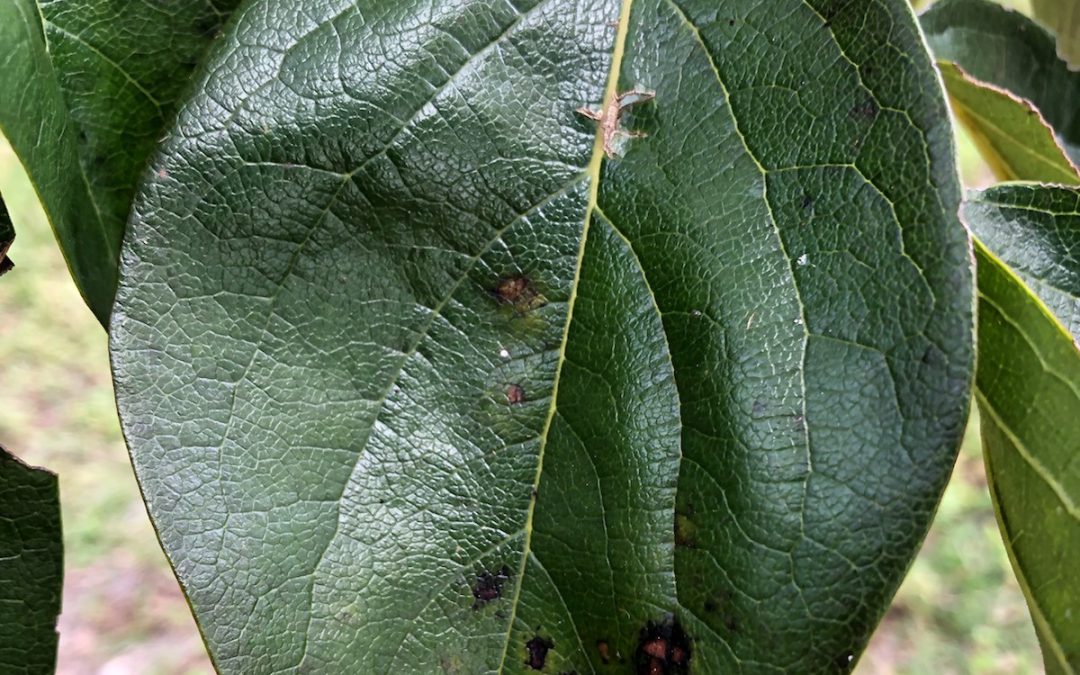
by Matthew Orwat | Oct 1, 2021
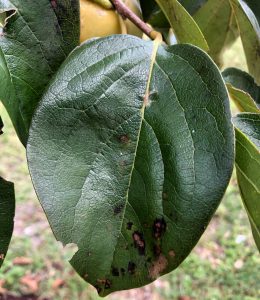
A spotted Japanese Persimmon leaf, Image Credit: Matthew Orwat
In gardening, brown or black spotted leaves are most often an indicator of disease problems or growth issues. This causes us to worry and seek answers as to why this is occurring. This is good since the first step in solving a plant growth or disease issue is diagnosis.
During Fall, the presence of brown or black spots on leaves of shade and fruit trees is usually not cause for alarm, as it might be in the spring or summer. Certain shade trees such as Southern Magnolia, Japanese Magnolia, various maple, persimmon and oak in the Red Oak group show substantial brown and black leaf spotting as Fall arrives. This is due to the fact that these leaves have been attacked by fungal pathogens and insects since Spring and resistance to damage has broken down over time. As Fall progresses, these leaves will senesce (purposeful deterioration due to age, such as at end of season) and fall to the ground. Therefore, this ugly spotting is part of natural seasonal leaf decomposition in deciduous trees.
Although Fall leaf spotting may not be something to worry about, oftentimes we run into plant problems that need quick diagnosis. Fortunately, your local Extension Office and the Plant Disease Diagnostic Clinic at NFREC exists for these situations. If you need help with plant problems, feel free to contact your local Extension Agent or Master Gardener Volunteer group and they will figure it out or send it along to the Diagnostic Clinic (small diagnostic fee if using NFREC clinic services).
If you happen to live in or near Washington County, we are launching our Second Mondays Free Plant Clinic. Staffed by knowledgeable and friendly UF / IFAS Master Gardener volunteers and your County Extension Agent, we will be available every second Monday of the month from 10am to 2pm at the Washington County Ag Center, which houses the UF / IFAS Extension Office. We will be located in the Master Gardener Volunteer Library which is just left of the central auditorium double doors. The launch date of this plant clinic is Monday, October 11th. See you then!
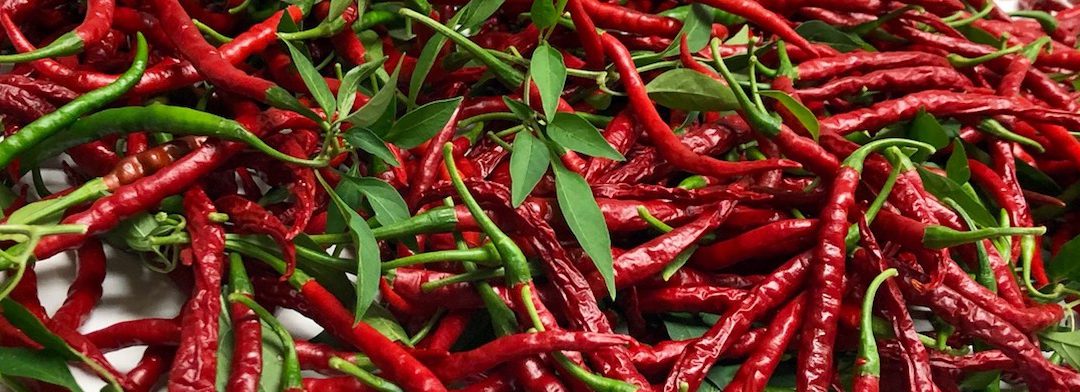
by Matthew Orwat | Sep 30, 2021
By Matthew Orwat and Judy Corbus
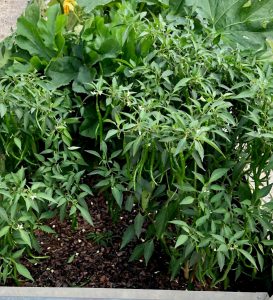
Cayenne Peppers growing this summer. Image Credit Matthew Orwat UF / IFAS Extension Washington County
As fall begins we often begin to think about the successes and failures of our vegetable gardens. Two of my successes this past summer have been pepper and basil.
A variety of peppers work great as transplants in mid to late spring. This spring a large variety of peppers were planted including Cayenne, Bell, Cubanelle, Habanero, Poblano, Anaheim, Cajun Belle, Havasau, Serrano, Jalapeno, and Banana. A loose, rich media was used containing coconut coir and composted organic humus to provide an excellent well-drained location which also retained moisture. Finding this delicate balance is difficult but can be achieved by using coconut coir and organic matter based garden soil mixtures. After the peppers were planted, they were side-dressed twice with a standard bagged 8-8-8 fertilizer blend containing micronutrients and once with an organic fertilizer. During the heat of the summer it was important to water the peppers at least every other day. Need for watering decreased as the fall weather approached, but was still necessary.
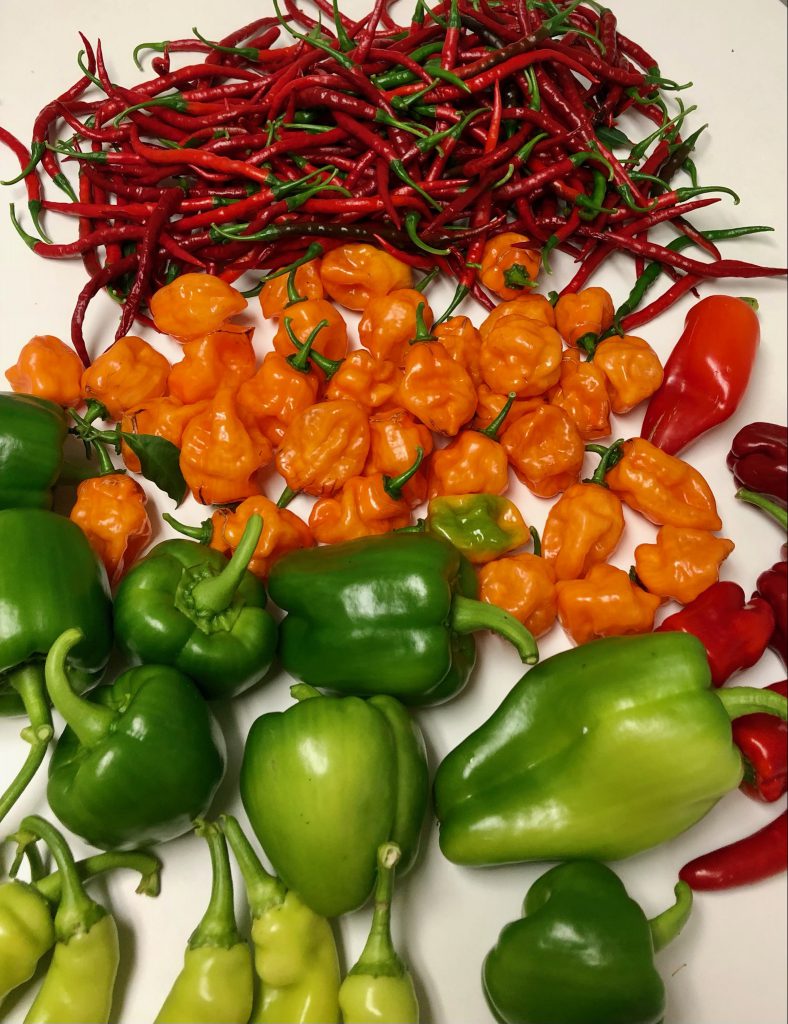
Bountiful Pepper Harvest. Image Credit Matthew Orwat UF / IFAS Extension Washington County
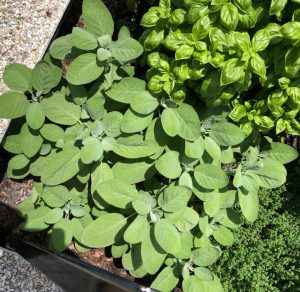
Sage and Basil Image Credit Matthew Orwat UF / IFAS Extension Washington County
In fall, many gardeners think it might be a good time to remove their peppers plants, but they can be encouraged to produce peppers until frost and maybe a little later with protection. Oftentimes it is more practical to start or transplant new pepper plants the following spring, but it is possible to pot up and overwinter peppers in a sheltered area or greenhouse.
In addition to peppers, basil was especially bountiful this year. To save my basil bounty for the winter I have options to dry, blanch or make pesto. This should be done before the first frost, since basil is very sensitive to freezing temperatures. Other herbs that will usually overwinter well in the garden include thyme, chives and rosemary. They will need little to no protection. Additionally, sage might come back the following year if it is in a protected area. Herbs such as cilantro and parsley will thrive in our North Florida winters and should be planted now.
To preserve the bounty of your harvest for later use, you may can, pickle, or freeze peppers. Follow these USDA-approved guidelines from the National Center for Home Food Preservation:
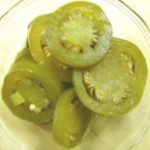
Credit : National Center for Home Food Preservation
Canning: https://nchfp.uga.edu/how/can_04/peppers.html
Pickling:
Freezing:
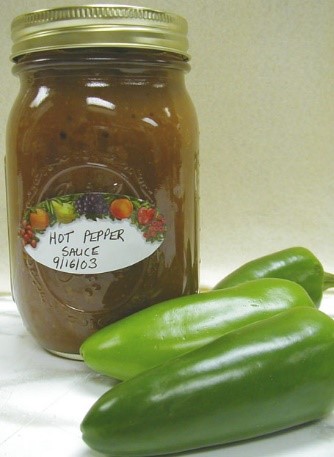

by Matthew Orwat | Jul 29, 2021
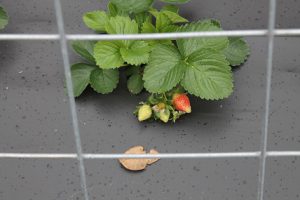
Strawberries growing on “plastic” to protect them from water splashed fungal spores found in soil. Image Credit: Matthew Orwat UF/IFAS Extension Washington County
As the alternating cycles of sun, heat and rain shape our summer days, I start thinking about cooler times of the year, the fall planting season. One plant to consider planting in the fall are strawberries. Planting strawberries in the fall is really an exercise in preparation for bountiful production of fruit beginning in January and continuing into May and June. The following procedure will lead to a successful strawberry production if followed!
The best location for strawberry production provides well-drained, moist, sandy soil with substantial organic matter. It must not be too wet. pH should be between 5.5 and 6.5, which is considered slightly acidic. A fertilizer scheme of 2 lbs. of a 10-5-10 fertilizer per 100 sqft of raised bed or 10 feet of row should be applied at pre-plant, with ¼ of the fertilizer over the top and the rest in a one-inch-deep band near the location of drip irrigation.
*DO NOT apply fertilizer directly below the plants, as the fertilizer may burn the young transplants.
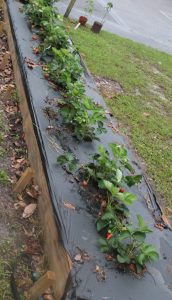
This is a raised bed of strawberries, which has been filled with rich composted growing media. Image Credit: Matthew Orwat UF/IFAS Extension Washington County
Commonly, a preferred system is the development of a hill system, which is 6-8 inches high and 24 inches wide. Drip irrigation should be installed for best results, thus keeping the leaves free of irrigation water. This hill should be covered with weed barrier, such as grower’s polyurethane plastic to reduce weed growth and soil splashing onto leaves. Additionally, strawberries do well when planted in a raised bed. This system can still utilize weed barriers and drip irrigation but gives the gardener the added benefit of manipulation of the growing media. Growing media made up of compost and coconut coir works especially well for this and may be found at local large garden centers.
Short day cultivars that have been proven to do well for home gardeners in Northwest Florida production are Sweet Charlie and Camarosa and should be purchased certified disease free from a reputable nursery. Both dormant bare root and actively growing plug plants are available for purchase, but I have had best luck with actively growing plug transplants.
While strawberry plants can easily withstand our winter temperatures, fruit can suffer damage from frosts below 32 degrees Fahrenheit. The good news is that small row covers or “low tunnels” can be constructed to prevent fruit loss and encourage early fruiting.
When setting out the transplants:
- Keep plants moist before planting
- Spread roots out in fan-shape
- Set plants in moist soil at the correct depth. Do not cover the plants crown with dirt or leave its roots exposed above the soil.
- Space plants 12 to 18 inches apart.
- Pack the soil firmly around the roots, then sprinkle with water. Overhead sprinkling may keep the tops from drying out until the roots can get established.

Homemade row cover for strawberries made of cow panels and sheets. Commercial row covers can be purchased using hoops and frost cloth. You can also make your own with pipes and bulk rolled frost cloth. Image Credit: Matthew Orwat UF/IFAS Extension Washington County
As stated above, strawberries should be mulched. Black polyethylene plastic mulch at 1 to 1½ mil thick is best (completely cover the top and sides of bed before planting). Be sure the bed is firm, formed correctly, moist, and fertilized adequately. Place soil on the edges of the plastic to hold it in place. Cut slits in the plastic for the transplants.
When using alternatives like straw, bark or other natural organic materials mulch to a depth of 1 to 2 inches, but do not completely cover the plant.
For more information, Please consult these references or contact your local extension agent:
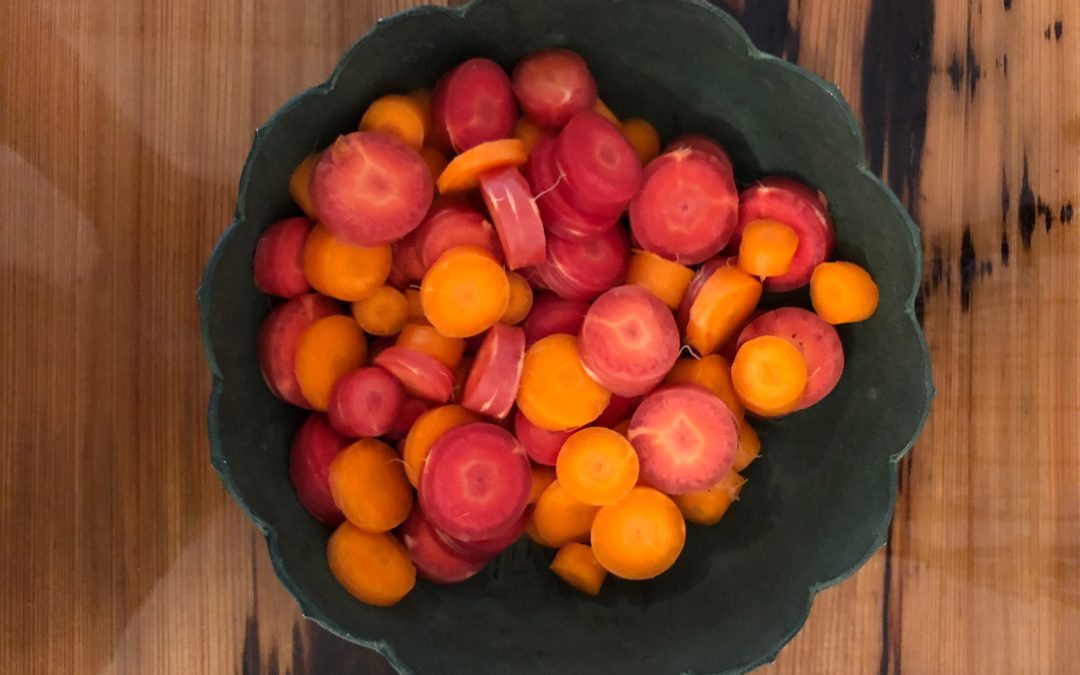
by Daniel J. Leonard | Feb 25, 2021
Carrots are synonymous with a few things: Bugs Bunny, old wives’ tales about improving eyesight, and the color orange. For centuries, orange colored carrot varieties have been the industry standard and still dominate store shelves. These days though, choices for consumers are ever expanding and thankfully home garden carrot variety selection has participated in this phenomenon! With a little searching, gardeners can now source and plant any color and/or type of carrot they desire. For instance, this winter, I planted carrots of various types in various shades of orange, purple, and red. Through this experience, I also found that not all colored carrots look, cook, or perform the same. The following is a quick primer on carrot types followed by my review of the four varieties ‘Bolero’, ‘Red Sun’, ‘Deep Purple’, and ‘Malbec’ after a season of growing.
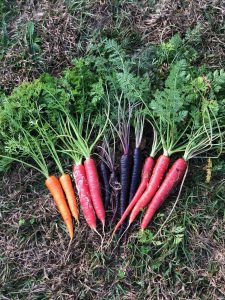
Carrot varieties (left to right): ‘Bolero’, ‘Red Sun’, ‘Deep Purple’, ‘Malbec’.
There are three main types of carrots regardless of color: Imperator, Nantes, and Chantenay. Imperator types are the extra-long, durable, sweet tasting carrots most often found in stores and are suited best to deep, loose soils. Nantes type carrots are medium length and cylindrically shaped, often with a blunt tip. Sometimes called “storage” carrots, Nantes types are easy to grow and tend to store well for long periods of time after harvest and retain their flavor well. Finally, Chantenay type carrots are excellent performers in shallower beds or soils as they are a bit shorter, possessing a conical shape with roots wider at the top and tapering to the tip, making a deep soil bed a bit less critical. I primarily grow Imperator and Nantes types as I find they give you a little more bang for the buck if you have a deeper (>6”) raised bed. Now, on to the variety reviews.
‘Bolero’ – I always have this carrot in my garden. An extremely versatile Nantes type carrot that has been a consistently high yielder for me whether I grow it in pots or in a traditional raised bed. Typical for a Nantes type, ‘Bolero’ stores very well in the refrigerator and will change your culinary life if you’ve only ever eaten carrots purchased from a store. They are excellent either fresh or cooked, with a complex, sweet taste. If I could only grow one carrot, it would be this one.
‘Malbec’ – Colored carrots have a poor reputation as far as flavor is concerned. ‘Malbec’ is the first non-orange carrot that changed my mind. This Imperator type is as flavorful as they come, deep red throughout, and is easy to grow. For some reason, ‘Malbec’ has been hard to come by the last two years, but if you spot seeds in a catalogue, online, or on a store shelf, it is well worth a purchase!
‘Red Sun’ – Winter 2020 was my first experience with ‘Red Sun’, a brand-new Nantes type carrot from Bejo Seeds. I only planted this variety because I initially could not source ‘Malbec’. Having said that, I was very pleased with ‘Red Sun’. The carrots were extremely vigorous, had excellent top and root growth and mostly held their own with ‘Malbec’ flavor-wise in the kitchen also. I would purchase ‘Red Sun’ again!
‘Deep Purple’ – Wow, they weren’t kidding when they named this variety! Most purple carrots are colored on the exterior but fade to a “normal” orange at their core. Not ‘Deep Purple’! This Imperator type is strikingly dark purple, almost black. Even the tops have a purple hue to them! Cooking them was also an interesting experience. Most colored veggies, peppers, carrots, and others lose their hue when cooked. Not this variety. Not only did ‘Deep Purple’ retain its color after cooking, my hands and cutting board turned a shade of indigo when preparing and, once put in a pan to sautee with other veggies, the juice from ‘Deep Purple’ dyed all the other veggies a deep violet! While I wouldn’t grow ‘Deep Purple’ as my main crop carrot, it definitely has a place in the garden as a tasty novelty.
Carrots are among the easiest to grow, most rewarding vegetables in the winter garden. Next fall, plant a variety of carrots in your home garden and enjoy the many types, colors and flavors that this tasty veggie has to offer! For more information on the above mentioned varieties, home carrot gardening in general, or any other horticultural topic, contact your local UF/IFAS County Extension office. Happy Gardening!
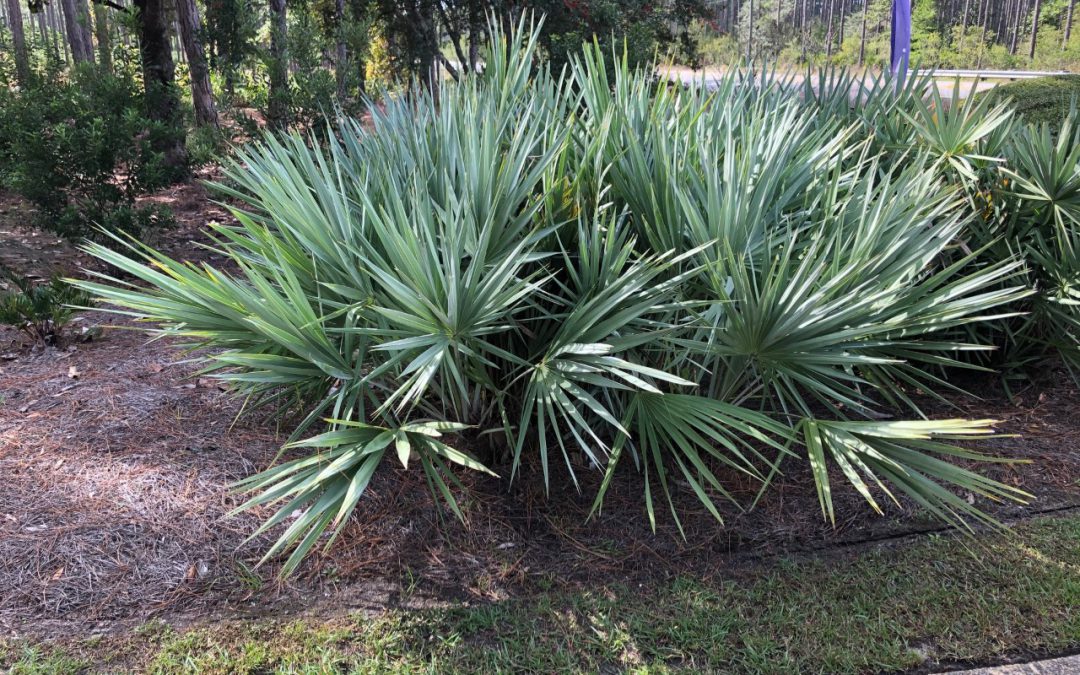
by Stephen Greer | Nov 13, 2020

Photo credit: Stephen Greer, University of Florida/IFAS Extension
Landscapes are an ever-changing setting that can be fun to view as the seasons come and go. We all have differing ideas of what an exceptional landscape should be. The point to always keep in mind is what you and your family like. Are you considering the Florida-Friendly Landscaping elements? You always want to keep a healthy, attractive environmental sound landscape. This brings many interesting design concepts to the table.
The kitchen table is exactly where a landscape design needs to begin. My dad was just the opposite, he would receive or buy plants on impulse. Load up all these three-gallon plants, take them home and plant without consideration the long-term growth, color combinations, time of bloom and many more topics. He just loved working in the yard and growing plants.
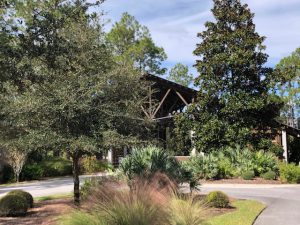
Photo Credit: Stephen Greer, University of Florida/IFAS Extension
There are basic principles of landscape design that are used as a guide. While I may stray from them from time to time, I always return to these principles. Just keep in mind that a landscape is an ever-changing living setting that we will always work to improve. The visual elements are based on what you see first when you enter a setting and are usually the vibrant high impact plants that may include bright bloom color, size of plant, focal plantings, leaf size and others. The other side of the visual is the subtle presence of low impact plants with softer colors, small leaves, lower growing plant size. This visual group often is planted en mass with a flow of plants to create a calming effect for the visitors to your landscape.
When the form of the plant is being considered, there are several points to keep in mind. Will it have a three-dimensional impact in the landscape setting? Is the landscape a small backyard or a one-acre open setting? What are the maintenance requirements of the plant(s) as they mature in size? A large tree can dominate a small area, but it may be just what is needed for shade with low plantings around it. In a large setting, multiple large trees may be needed to create a focal point. I have seen some wonderful tree alleys that help in directing the flow of the landscape down drives, walks, and paths. These forms should be considered for all plants in the landscape including, trees, shrubs, groundcovers and even hardscapes.
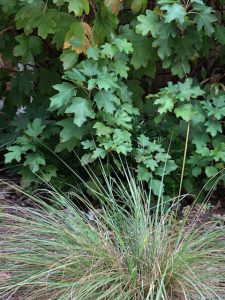
Photo Credit: Stephen Greer, University of Florida/IFAS Extension
Up next is the texture of the plant(s). Are you looking for large and coarse or small, “softer” leaves? You may find finely textured plants along paths or at entry areas to steps, softening the hardscape of the steps. Are the large leaved plants open and airy, allowing light to flow through? Large coarse leaved plants may be found at the back of landscape beds with fine textured smaller plants in front creating a three-dimensional look or even used as a focal point to pull the gaze of the eye to a determined location.
Color in the landscape has just as much impact as the plant texture, size and form. Color can bring a bold or a soft statement. The color is often thought of from blooms, but leaves too change in color with the seasons, from a fresh new bright green, purple, red or other colors in the spring to deeper, more mature colors as summer comes in. Trunks can also bring unique colors to the landscape from subtle yellows to cinnamon.
There are so many things to think about when creating a long-term vision for your landscape. Many options come in the decisions that will need to be made. Do your research and always contact your local Extension office for more information!


















